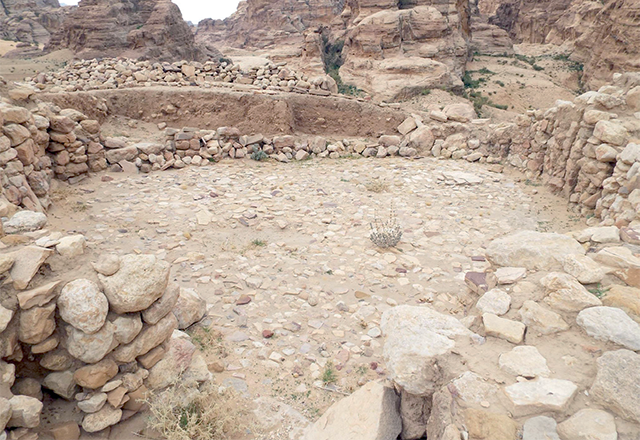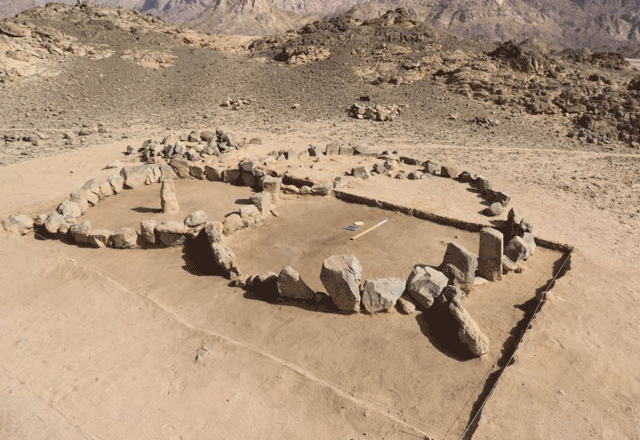You are here
Neolithic structure in Ain Ghazal reveals unique architectural, ritual significance
By Saeb Rawashdeh - May 24,2024 - Last updated at May 24,2024

A view of the circular shrine at Ain Ghazal, a site located near Marka Shamalia in northeastern Amman (Photo courtesy of ACOR)
AMMAN — During the filed season in 1996 at Ain Ghazal on the north-eastern outskirts of Amman, the archaeological team discovered a rectangular Late Pre-Pottery Neolithic structure. The structure was unique, not only in Ain Ghazal, but other parts of Levant in the Neolithic Period. It was situated near the lowest terrace of limestones, remembered the scholar Gary Rollefson, who with the Professor Zeidan Kafafi, spent decades digging at the site and analysing pottery, artefacts, human and animal bones found at Ain Ghazal.
“The building is oriented eastward and the steep slope is responsible for the destruction of the western end of the building,” Rollefson said, adding that the walls were made of dressed limestone that are 40 centimetres wide. The floor is made of dirt, not the plaster, which was a characteristic of LPPNB.
According to the professor, the structure underwent 2-3 times phases of use and the interior had furniture which was untypical for that period.
“Near the centre of the building was a row of three standing rectangular limestone blocks,” Rollefson continued, adding that in the first phase the floor had a square red-painted lime plaster hearth between the standing stones and the eastern wall; the hearth was surrounded by seven flat limestone slabs that were arranged so that the perimeter of the feature was generally circular.
A second phase of the structure was clearly signalled by the construction of the low stone platform between northernmost standing stone and the northern wall, Rollefson explained, adding that this platform was set off from the rest of the room by two narrow walls that form a small rectangular enclosure near the centre of the northern wall, using the northernmost standing stone as its south-eastern corner.
The team did not find any debris or artefacts on the platform.
“It is not certain that the third phase-earlier or later than the construction of the low platform-is indicated by a blocked doorway, or if this during the second phase as well,” Rollefson underlined.
An opening approximately 80 centimetres wide is situated near southeast corner of the eastern room, leading towards the uphill side of the building, while the vertical lines of the passageway are visible along the left side of the orthostat (a slab), which is white and appears to have been shaped to a roughly oval section and the bulge at the top of the stone produces an anthropomorphic of the column aspect of the column, Rollefson elaborated.
However, special buildings in Ain Ghazal are not unique for the Levant because the scholars found similar structures in Anatolia, around Jericho in Palestine and in Beidha (southern Jordan).
“Despite the variations in specific details, all these examples show that regardless of the settlement size PPN populations set aside the special structures for semi-public and public rituals that cemented community relationship and identity,” Rollefson underscore, adding that there are important aspects of social organisation entailed in such religious edifices.
Related Articles
Hunter — gatherers in the southern Levant based their social identity on small groups of consanguineal (blood-related) and affinal( through
AMMAN — According to an American anthropologist, discerning the prehistoric use of standing stones found in Jordan’s Black Desert, located i
AMMAN — New excavations in Wadi Abu Tulayha help understand the Late Neolithic cultural landscape in southern Jordan, noted a Japanese profe














